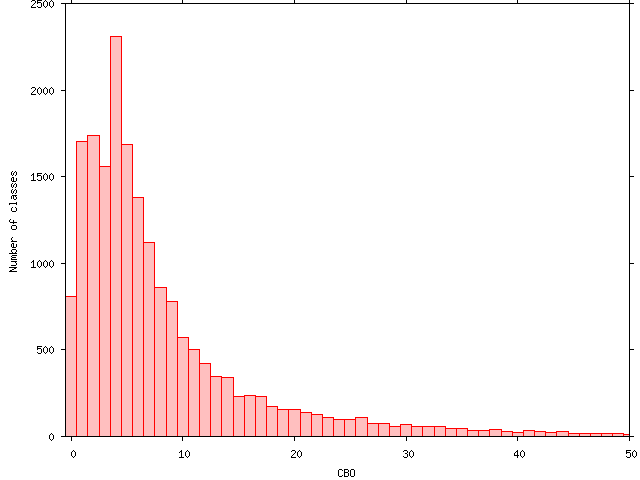 Last change: Thursday, April 5, 2007 4:10 pm
Last change: Thursday, April 5, 2007 4:10 pm
Unless otherwise expressly stated, all original material on this page created by Diomidis Spinellis is licensed under a Creative Commons Attribution-Share Alike 3.0 Greece License.
#!/bin/sed -f 1i\ <?xml version="1.0" ?>\ <ckjm> s/^/<metric><classname>/ s/ /<\/classname><WMC>/ s/ /<\/WMC><DIT>/ s/ /<\/DIT><NOC>/ s/ /<\/NOC><CBO>/ s/ /<\/CBO><RFC>/ s/ /<\/RFC><LCOM>/ s/ /<\/LCOM><Ca>/ s/ /<\/Ca><NPM>/ s/$/<\/NPM><\/metric>/ $a\ </ckjm>If you name the script ckjm2xml and make it executable, you can generate XML output and save it into a file as follows.
java -jar /usr/local/lib/ckjm.jar *.class | ckjm2xml >metrics.xml(Replace the sequence
/usr/local/lib/ckjm.jar
with the actual path and filename of the ckjm version you are using.)
<?xml version="1.0" ?> <ckjm> <metric><classname>gr.spinellis.ckjm.ClassMetricsContainer</classname><WMC>3</WMC><DIT>1</DIT><NOC>0</NOC><CBO>3</CBO><RFC>18</RFC><LCOM>0</LCOM><Ca>2</Ca><NPM>2</NPM></metric> <metric><classname>gr.spinellis.ckjm.MethodVisitor</classname><WMC>11</WMC><DIT>1</DIT><NOC>0</NOC><CBO>21</CBO><RFC>40</RFC><LCOM>0</LCOM><Ca>1</Ca><NPM>8</NPM></metric> <metric><classname>gr.spinellis.ckjm.CkjmOutputHandler</classname><WMC>1</WMC><DIT>1</DIT><NOC>0</NOC><CBO>1</CBO><RFC>1</RFC><LCOM>0</LCOM><Ca>3</Ca><NPM>1</NPM></metric> <metric><classname>gr.spinellis.ckjm.ClassMetrics</classname><WMC>24</WMC><DIT>1</DIT><NOC>0</NOC><CBO>0</CBO><RFC>33</RFC><LCOM>196</LCOM><Ca>6</Ca><NPM>23</NPM></metric> <metric><classname>gr.spinellis.ckjm.MetricsFilter</classname><WMC>7</WMC><DIT>1</DIT><NOC>0</NOC><CBO>6</CBO><RFC>30</RFC><LCOM>11</LCOM><Ca>2</Ca><NPM>5</NPM></metric> <metric><classname>gr.spinellis.ckjm.ClassVisitor</classname><WMC>13</WMC><DIT>1</DIT><NOC>0</NOC><CBO>14</CBO><RFC>71</RFC><LCOM>34</LCOM><Ca>2</Ca><NPM>9</NPM></metric> <metric><classname>gr.spinellis.ckjm.ClassMap</classname><WMC>3</WMC><DIT>1</DIT><NOC>0</NOC><CBO>1</CBO><RFC>21</RFC><LCOM>0</LCOM><Ca>0</Ca><NPM>2</NPM></metric> <metric><classname>gr.spinellis.ckjm.PrintPlainResults</classname><WMC>2</WMC><DIT>1</DIT><NOC>0</NOC><CBO>2</CBO><RFC>8</RFC><LCOM>0</LCOM><Ca>1</Ca><NPM>2</NPM></metric> </ckjm>To copy the ckjm's output to the Microsoft Windows clipboard to later paste the results into an MS-Word table, simply pipe the output of ckjm to the winclip command of the Outwit tool suite. You can also plot the results in various formats by using gnuplot. Here is a diagram depicting the distribution of the CBO metric within the classes of Eclipse.

| Contents | « Previous Next (Metric Descriptions) » |